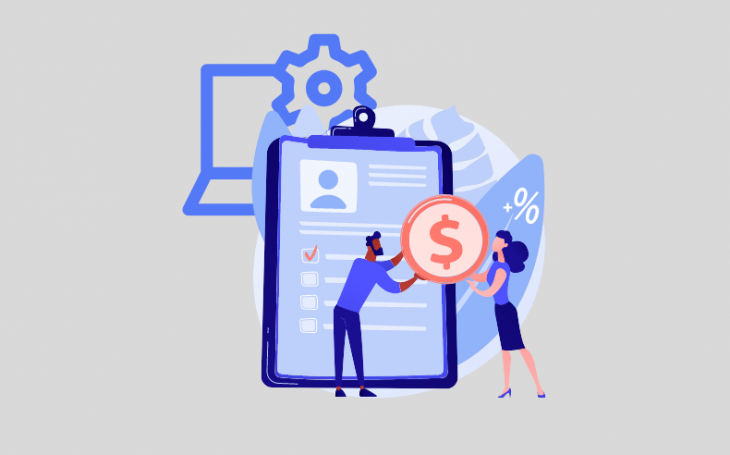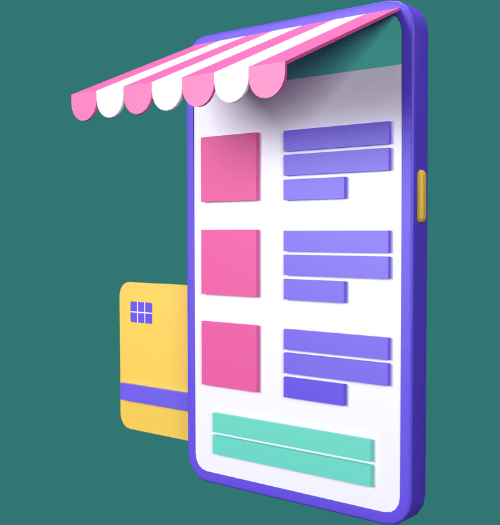From Paper to Paperless: The Power of Loan Origination Software



Overview
In a world that is rapidly moving towards digital transformation, the financial industry is no exception. The traditional paper-based loan origination process is being replaced by an automated and streamlined software solution. Loan origination software is becoming increasingly popular among financial institutions, as it not only speeds up the lending process but also provides enhanced accuracy and security. In this blog, we will explore the power of the loan origination system and how it is transforming the lending landscape from paper to digital.
Introduction
Lending is an essential part of a financial economy, and the process of loan origination is critical to any lending business. Traditionally, loan origination has been a paper-based process that is often slow, cumbersome and prone to errors. However, with the advent of loan origination software, the process has become faster, more efficient and more accurate.
A loan origination system is THE tool that streamlines the entire loan origination process, from application to disbursement. An end-to-end solution to enhance the customer experience, simplify the lending workflow and reduce the time and cost of origination. We are here to look at the nitty-gritty of LOS and how it is changing your business and taking it to the next level!
For you to understand how powerful the LOS tool can be for you and your customers, let us take you through a journey of a comparative study between paper-based and paperless loan origination processes in each stage.
You may also like: How digitization in loan origination solves challenges of banks & NBFCs
Paper-based Loan Origination Process vs Paperless Loan Origination Process
Imagine you are a borrower and need a personal loan (unsecured). The above paragraphs clearly specify that you can go two ways. But which way is better? We are going to dive into each stage of the loan origination process in two scenarios to analyse which way is faster, superior, user-friendly and, most importantly, beneficial for lenders and borrowers.
- You are taking a personal loan from a traditional financial institution, and
- You are taking a personal loan using our loan origination software, CloudBankin.
Let’s go!
1. Enquiry, Checklist & Preparation of Documents
Traditional | CloudBankin |
You visit a financial institution (FI) to get a personal loan. | You download the app from Google Play Store. |
You wait for a loan officer. | You click on “Apply Loan”. Different products like personal loan, business loan, home loan, education loan, etc., are displayed with their features. |
You state their loan needs. | You choose the most suitable product according to your loan needs. |
You enquire about your doubts and then collect the checklist. | The app guides you to provide all information & complete all requirements in each step to go next. |
You go back and prepare all your documents. | Your loan application is ready for submission. |
Time Taken For This Stage = 24 hours | Time Taken For This Stage = 3 minutes |
2. Submission of the Application
Traditional | CloudBankin |
You return to the FI and submit your documents like proof of identity (POI), proof of address (POA), bank statements, photos, etc. | You submit documents as & when needed. Only basic information is taken, and data is verified against the government portal. No scan & no uploads are needed. |
Time Taken For This Stage = 24 hours | Time Taken For This Stage = 2 minutes |
Total Time Taken = 48 hours | Total Time Taken = 5 minutes |
3. Verification of the Application
Traditional | CloudBankin |
The physical documents are verified against the originals produced. | You are verified via face-match and video verification as and when data is collected. Your geographical position is also located. |
If the documents don’t match, you are needed to revisit the FI with the required documents, or FI sends someone to your place for document collection. | The process happens at every stage. If you are not qualified here, you are rejected then and there. |
Time Taken For This Stage = 24 hours | Time Taken For This Stage = 2 minutes |
Total Time Taken = 72 hours | Total Time Taken = 7 minutes |
4. Acceptance
Traditional | CloudBankin |
The FI asks you to submit additional documents if required. And when the documentation is complete, the acceptance is given to proceed further. | Verification & acceptance go hand in hand. The rejection happens immediately if there is a deviation at any stage. |
Time Taken For This Stage = 24 hours | Time Taken For This Stage = 2 minutes |
Total Time Taken = 96 hours | Total Time Taken = 10 minutes |
The result after this analysis? When you take a sneak peek at the traditional process, it not only takes 4 days, but also you have to leave every work behind to visit the organization again and again for each stage and whenever they call you. They even have to visit your place to verify you physically. It is really bothersome and tiresome.
But, wow! Look at that! It took only 10 MINUTES for you to get your loan using a digital LOS! You didn’t even have to move from your place, and you completed the process totally online! It was such a hassle-free process! Isn’t that amazing?
Hands down, in this case, a digital loan origination system wins!
You may also like: How lending companies can disburse the loan in 10 mins
Hence, you now realise how beneficial a LOS is from a borrower’s point of view. But what about a lender’s perspective? What would the scenario look like from a loan officer’s point of view? Let’s recreate the same from a loan officer’s perspective for each stage of the loan origination process in traditional and CloudBankin environments.
Let’s go!
5. Credit Appraisal
Traditional | CloudBankin |
Here, the underwriting team appraises in the following steps. 1) Pull data from credit bureaus’ reports and analyse any discrepancies. 2) Validate the bank statements, and arrive at a disposable income. 3) Arrive at an eligibility decision. 4) If yes, define how much the loan amount is. The team can also ask for additional documents at any step if required. | 1. All 2000+ data points are collected upfront from CKYC, credit bureaus, bank statements, alternate data like SMS Analyser, etc. 2. They are then fed into Cloudbankin’s rule engine for instant eligibility decision and generating loan offers. |
Time Taken For This Stage = 24 hours | Time Taken For This Stage = 60 seconds |
6. Loan Sanction & Post-Sanction Preparation
Traditional | CloudBankin |
The sanction letter is issued for approval. | Loan offer is issued right away after approval. |
The list of documents collected is shared. | It is done online. The app takes the borrower through the journey. |
Time Taken For This Stage = 24 hours | Time Taken For This Stage = 3 minutes |
Total Time Taken = 48 hours | Total Time Taken = 5 minutes |
7. Agreement/Mandate Registration/Collection
Traditional | CloudBankin |
The loan mandate is physically filled. | The mandate is registered online. |
The loan agreement is physically signed and submitted. | The agreement is e-signed and can be downloaded from the application at any point in time. |
Loan repayment is also done physically. | Loan repayment is automated here through mandate collection. |
Time Taken For This Stage = 24 hours | Time Taken For This Stage = 3 minutes |
Total Time Taken = 72 hours | Total Time Taken = 8 minutes |
8. Loan Disbursement
Traditional | CloudBankin |
Post-sanction checklist is verified & approved by the concerned authority of the FI. | The app’s automated workflow handles the post-sanction checklist. |
Borrower’s account is set up & disbursement is done physically. | Borrower is guided through the process & disbursement is done online. |
Time Taken For This Stage = 24 hours | Time Taken For This Stage = 3 minutes |
Total Time Taken = 96 hours | Total Time Taken = 10 minutes |
The result? Here, the loan officer in the traditional loan origination process has to go through each stage in a paper documentation manner sitting from a physical branch. They also have to ask the borrower to visit the branch of the FI for documentation, including agreement and NACH signing. And here also, to complete everything, it takes 4 days.
But for a digital LOS, all the stages are completed within the app, which results in taking all documentation online. Even the e-Mandate and agreement signing is done digitally. Ultimately reducing the time to just 10 MINUTES!
All-in-all, in this case also, the digital LOS wins.
Hence, let’s collaborate on the overall analysis and see below points on how the digital loan origination system triumphs over the traditional loan origination process.
Benefits of Using a Digital Loan Origination System
- Processes 90% more applications than the traditional process.
- 70% decrease in cost per loan application from the traditional process.
- Able to disburse loans in just 10 minutes, which is a 99% decrease from the traditional process.
- Reduces human effort by 85%.
- Reduces operational costs by 75% from the traditional process.
- Expanding geographically without creating any physical branches.
- Borrowers can avail of loans at any time from anywhere.
Hopefully, now you are able to grasp how powerful a digital loan origination system is. Let’s expand that understanding more by looking at the current trends and advancements in its technology.
You may also like: Enhancing customer experience through loan origination system
Current Trends and Advancements in Loan Origination Technology
LOS has come a long way since its inception. Here are some of the most notable trends and advancements
- Complete cloud-based systems as they are cost-effective, scalable and seamlessly integrated with other systems and applications.
- Mobile-first solutions such as LOS are being designed to optimize for mobile devices, with responsive designs, simplified user interfaces and features like e-sign and mobile document capture.
- AI is being used in a number of ways, from automating underwriting processes to identifying potential fraud and risk factors via face-match and video-match verifications. It also helps lenders make informed decisions by reviewing vast amounts of data and identifying patterns and trends.
- Automation and digitization are moving lenders away from paper-based processes and towards e-sign, document capture, and other digital solutions.
- Integration of 3rd-party data sources such as credit bureaus, bank statements, government databases and other FIs. It allows lenders access to a wider range of real-time data.
- Increased focus on customer experience with features like pre-qualification, instant approvals, and personalized loan offers. This helps lenders attract and retain borrowers while improving customer satisfaction and loyalty.
Conclusion
In conclusion, the loan origination system has revolutionized the lending industry by streamlining and automating loan application processes, reducing potential errors, and increasing operational efficiency. Using a cloud-based loan origination software like CloudBankin allows faster loan processing times, increases transparency, reduces the cost per loan application, reduces operational costs and enhances risk management. Moreover, a LOS has the potential to change the industry even more in the future with greater access to credit and promoting responsible lending practices. Overall, loan origination software is invaluable for any lender looking to stay competitive and provide the best possible service to their customers.
Frequently Asked Questions
What is digital loan origination system?
A digital loan origination system manages and automates the entire loan onboarding process for lenders with the power of digital technology. This software solution is designed to provide lenders with a range of features that can enhance the loan origination process, including a) an online application and self-service portal for customers, b) data collection and verification from multiple sources, c) intelligent underwriting and credit decisioning, d) integration with third-party services such as credit bureaus and payment gateways, e) document management and e-signature support, f) workflow management and activity monitoring, and g) comprehensive reporting for a valuable insights to lenders. By leveraging these features, lenders can improve their efficiency, quality, profitability, and customer satisfaction by streamlining and simplifying the loan origination process. A digital loan origination system is the key to unlocking a more seamless and efficient lending experience for all involved.
Related Post

How Digitization in Loan Origination Process solves the challenges of Banks & NBFCs?
Loan Origination is when a borrower applies for a loan,

Introduction to Loan Origination System
What is Loan Origination System? Loan origination is the term

An Introduction To Credit Bureaus
What is a Credit Bureau? A company which collects information
- Email: [email protected]
- Sales Enquiries: +91 9080996606
- HR Enquiries: +91 9080996576
Quick Links
Resources
© 2025 LightFi India Private Limited. All rights reserved.
(Formerly known as Habile Technologies)